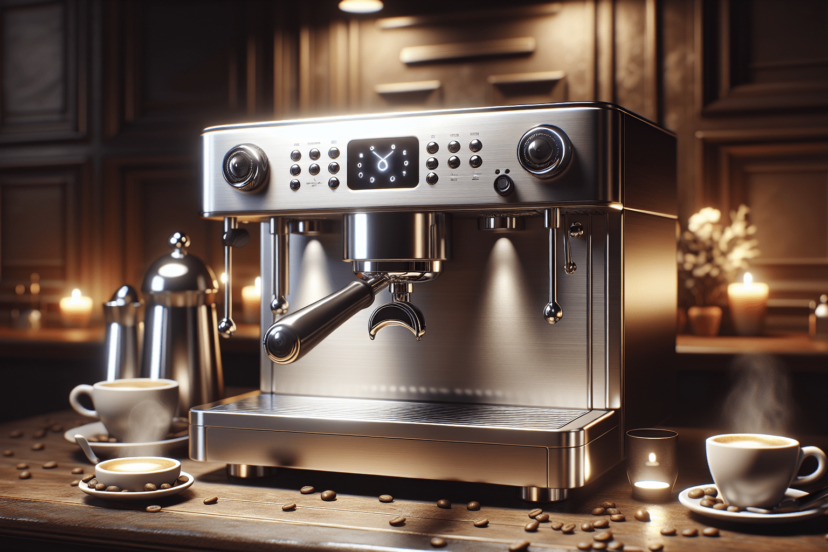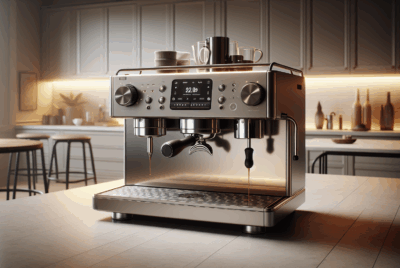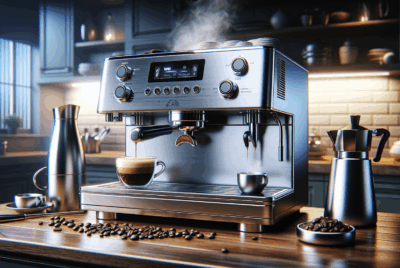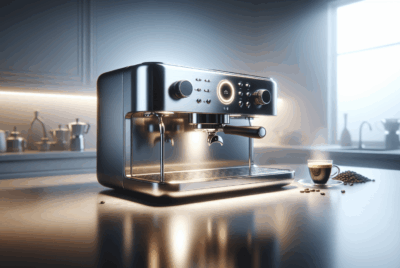The Ultimate Coffee House Espresso Machine Guide
As an Amazon Associate, I earn from qualifying purchases, at no additional cost to you. Disclaimer
Have you ever walked into a coffee house, inhaled the rich aroma of espresso, and wondered how they make such a perfect cup? The secret lies in the espresso machine. In this ultimate guide, we will unravel the intricacies of coffee house espresso machines, helping you understand how they work and what makes each type unique.
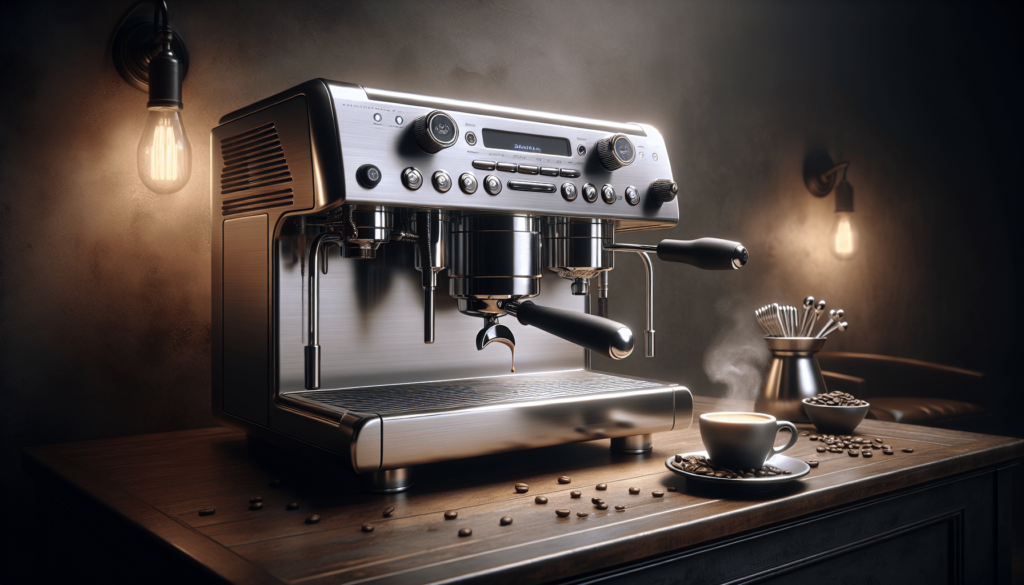
Click Here to Learn the Art of Espresso
Understanding Espresso: More Than Just a Shot
Espresso is the heart of many coffee beverages and making it perfect requires skill and the right equipment. Let’s dive into what espresso is and why it’s so special.
What is Espresso?
Espresso is not just any coffee; it’s specific in how it’s brewed. It involves forcing hot water through finely-ground coffee beans under pressure, resulting in a rich, concentrated coffee shot with a distinct crema on top. This crema is crucial and signifies a well-executed espresso pull.
The Origin of Espresso
Originating in Italy, espresso became popular for its bold flavor and quick brewing time. The word “espresso” itself means “express” or “fast,” reflecting the speedy nature of its preparation. Since its inception, it has become a foundation for many beloved coffee drinks, such as lattes, cappuccinos, and macchiatos.
How an Espresso Machine Works
Understanding the basics of an espresso machine helps you appreciate the complexity behind each cup. Let’s break down its components and functions.
Key Components of an Espresso Machine
The magic of an espresso machine lies in its components, each contributing to that perfect cup:
-
Portafilter: A handle that holds the basket of coffee grounds.
-
Group Head: The part of the machine where water meets coffee.
-
Steam Wand: Uses steam to froth milk for various coffee drinks.
-
Boiler: Heats the water for brewing.
-
Pump: Provides the necessary pressure for extracting espresso.
The Espresso Brewing Process
The brewing process revolves around heating water to the right temperature and then forcing it through coffee grounds with precision pressure. This is how those bold flavors and crema form, providing the essence of espresso that many coffee drinks are based on.
Click Here to Unlock Barista Secrets Here
Types of Espresso Machines
Espresso machines vary greatly, each type engineered to serve different needs and preferences. Here’s an overview to help you grasp which might be the best fit for a coffee house setting.
Manual Espresso Machines
These machines require the barista to manually control the water flow and pressure.
-
Pros: Full control over the process; offers a classic espresso-making experience.
-
Cons: Requires skill and practice to master.
Semi-Automatic Espresso Machines
Semi-automatic machines automate some processes while allowing manual control over others.
-
Pros: Balance of control and convenience; ideal for those with some experience.
-
Cons: Still requires skill, although less than manual machines.
Automatic Espresso Machines
These automate the water flow for espresso extraction, providing consistency.
-
Pros: Easier to use than semi-automatic machines; consistent results.
-
Cons: Less control over the brewing process.
Super-Automatic Espresso Machines
These machines fully automate the espresso-making process, from grinding to brewing.
-
Pros: Convenience and consistency; great for high-volume settings.
-
Cons: Expensive and less ability for customization.
Choosing the Right Espresso Machine for Your Coffee House
Choosing the right machine involves considering your budget, space, and expertise level. Let’s delve into those factors.
Budget Considerations
Espresso machines range significantly in cost. A manual machine might be less expensive initially but could incur higher costs in skill development and practice time.
| Machine Type | Estimated Cost Range |
|---|---|
| Manual | $300 – $2,000 |
| Semi-Automatic | $500 – $5,000 |
| Automatic | $1,000 – $6,000 |
| Super-Automatic | $2,000 – $10,000 or more |
Space and Size Limitations
Consider your coffee house size. Large machines like the super-automatic type can occupy considerable counter space which might not be feasible for smaller cafes.
Level of Expertise
Evaluate your staff’s skill level. If they are highly skilled, manual or semi-automatic machines could allow more control and creativity. Less experienced staff might benefit more from automatic or super-automatic machines.
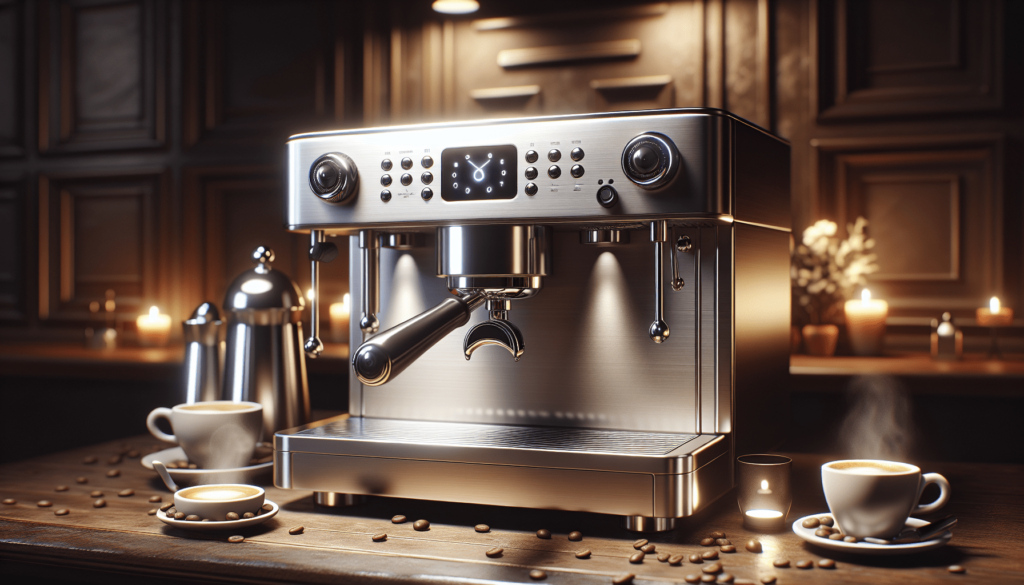
Click Here to Transform Your Morning Routine
Understanding Coffee Beans for Espresso
The machine you choose is only part of the equation. Equally important is the quality and type of coffee bean you use.
Selecting the Right Beans
For espresso, beans should ideally be of medium to dark roast, tailored for brewing espresso to highlight the rich flavors and create the desired crema.
The Role of Freshness
Freshly roasted beans make a significant difference in taste. Look for beans that have been roasted within the last two weeks to ensure optimal flavor.
Maintaining Your Espresso Machine
Regular maintenance ensures your machine’s longevity and peak performance, and it includes daily, weekly, and monthly tasks.
Daily Maintenance
- Clean the portafilter and group head.
- Purge the steam wand after each use.
- Keep the exterior clean and dry.
Weekly Maintenance
- Disc-scale the machine.
- Check and clean any water filters.
- Inspect and tighten fittings if needed.
Monthly Maintenance
- Deep clean the machine thoroughly.
- Replace worn gaskets and seals.
- Check boiler pressure settings and adjust if needed.
Troubleshooting Common Issues
At times, espresso machines can encounter problems. Knowing how to address common issues can save time and hassle.
Weak or Watery Espresso
This issue often involves an incorrect grind size or tamp pressure. Ensure the coffee is ground fine enough and tamped with the right amount of pressure.
No Steam from Steam Wand
This can result from clogged steam wand holes. Regular cleaning typically resolves this issue. A blocked wand not only affects steam quality but can lead to other internal problems.
Espresso Tastes Bitter
A bitter taste is usually due to over-extraction, which could mean the shot was pulled for too long, or the water temperature was too high. Make adjustments accordingly.
The Future of Espresso Machines
Espresso machines are evolving with technology, offering new features that enhance the coffee experience. Stay informed about the trends that could impact the future of coffee-making.
Smart Espresso Machines
The integration of technology is making espresso machines “smarter”. Features such as built-in Wi-Fi, automated recipe storage, and temperature control via apps are becoming more common.
Sustainability in Coffee Equipment
With growing awareness about sustainability, many manufacturers are focusing on energy-efficient models and better materials for long-term use to reduce waste.
Conclusion
Delving into the workings of coffee house espresso machines unveils a world of precision, art, and taste. Whether you own a coffee house or are an enthusiast wanting to bring the café quality to your home, understanding these machines can elevate your coffee game. From selecting the right type, maintaining it properly, and staying ahead of trends, you now have a comprehensive guide to navigate the fascinating world of espresso making.

